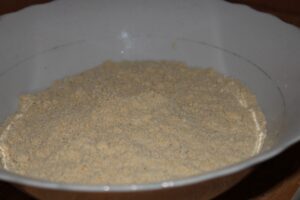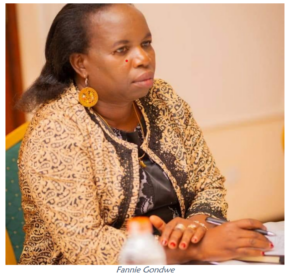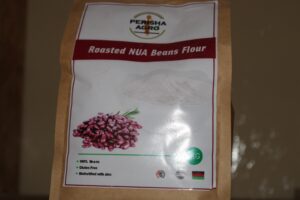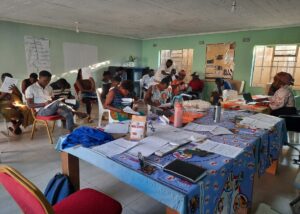By Yohane Chideya and Justice Munthali
Fannie Gondwe’s name is not new among many local farmers and agripreneurs in Malawi, having worked with hundreds of them for over two decades now.
Her driving force towards this passionate journey, however, was quite distressful. In 2002, Fannie’s sister lost a two-year old child due complication associated with malnutrition.
Following this, Gondwe pondered on how best she could apply her entrepreneurial skills to bring solutions towards the eradication of malnutrition in her country.
Malnutrition derails forward developmental trajectory and overall prosperity of nations. It has adverse effects on human capital development and economic productivity. Therefore, it is concerning that malnutrition continues to be a threat to the future of many Malawian children, with the United Nations Children’s Fund (UNICEF) projecting that at least 573,000 children are at risk of malnutrition in 2023 alone.
UNICEF attributes this to increased food insecurity, as well as poor access to water and basic sanitation services, especially in the districts that were severely hit by Tropical Cyclone Freddy between the months of February and March 2023.
Gondwe’s dream was actualised in 2012, when she first used her middle name “Perisha” to establish Perisha Agro and Packaging Enterprise in Lilongwe, an eco-inclusive agri-business enterprise aimed at improving the nutritional status of women and under-five children in Malawi.
To drive her Enterprise’s agenda, Gondwe has been contracting farmers, training them, and monitoring their activities to ensure that they maintain best farming practices for a guaranteed quality and high yield returns.
“Our business model has been working with contract farmers since it is designed for a circular economy. The belief is that if we support a farmer, a farmer supports his/her children, tomorrow the same children will support government,” she says.
Fannie Gondwe: Founder of Perisha Agro and Packaging Enterprise – Picture Courtesy of Perisha
She envisages an economically developed Malawi, with local bean farmers being at the centre of a well-coordinated bean supply chain.
Since Perisha was established, the focus has been to promote locally produced food products that are bio-fortified with vitamins and minerals, such as orange-fleshed sweet potato flour/puree, orange maize flour and high iron bean (HIB) flour.
However, lately, the attention has been skewing towards production of blended flours, as a way of reducing cost of production and increasing nutrient density for more nutritional uptake by the targeted consumers.
Perisha’s whole high iron bean (HIB) flour from NUA 45 – Picture Courtesy of Yohane Chideya
PABRA’s influence
Perisha benefitted from the Food Processing Project’s interventions, an initiative that was being implemented in Malawi and Zambia by the Alliance of Bioversity International and International Centre for Tropical Agriculture (The Alliance) and funded by USAID under Feed the Future Innovation Lab for Legume Systems Research managed by Michigan State University.
Gondwe touts the partnership that has existed, over the years with the Alliance, through the Pan Africa Bean Research Alliance (PABRA), which she says has assisted in propelling her dreams of processing nutritious flour blends.
Initially, Gondwe was producing whole high iron bean (HIB) flour from NUA 45, but faced with some challenges, such as high input costs and poor consumer acceptability of the product. After hearing the whole idea of blending bean flour with other products through the project and learning on how it can transform her business and nutrition of consumers, she was quick to move in and deploy her locally available materials to make this endeavour possible.
With the help of data gathered by the Food Processing Project’s students from Lilongwe University of Agriculture and Natural Resources (LUANAR), Gondwe has reformulated and rebranded her flour products.
“When we first heard about blended flour and its benefits, it raised our curiosity. Today the idea has reshaped our approach towards flour processing. We then banged heads to decide on the type of nutrition crops (legumes and cereals) to incorporate to produce proper blends,” explains Gondwe.
She is grateful for the interventions, which she says have come with readily available markets for the products, a development that boosted her desire to do more.
 Bean-based blended flour processed by Perisha – Picture Courtesy of Yohane Chideya
Bean-based blended flour processed by Perisha – Picture Courtesy of Yohane Chideya
Optimization of flour blends
The idea of blending bean flour with flours from other food crops, such as orange maize and sorghum necessitated the need for optimisation process. Optimisation was meant to assist Perisha with development of bean-based product formulation with a focus on: optimal ingredient and nutrient content, process flow and processing conditions, consumer acceptability, cost of production, food safety and shelf stability, as well as regulatory conformation following the product development ladder (benchtop, pilot plant and commercial plan).
Nellie Manda is a Master of Science in Food Technology student from LUANAR, who has been working directly and closely with Perisha on the optimization aspect.
She says, she first assisted to identify potential food crops (soybean, rice, bean, orange-fleshed sweet potatoes, sorghum, and orange maize etc.) that could be blended with bean flour and used food composition tables to calculate nutrient compositions, such as protein, fat, energy, crude fiber, and ash contents.
Later, she conducted benchtop experiments to make various product prototypes based on the widely used corn-soy blend standard promoted by many stakeholders, including UNICEF, for nutrition feeding programmes. She then conducted pilot plant experiments to understand process flow and processing conditions. She used response surface methodology to produce optimal nutrient formulation, as well as optimal production costs analyses.
Sensory evaluation in progress at Perisha processing plant – Picture Courtesy of Nellie Manda
By using the response surface methodology, she discovered that some blends had very high protein content but with high production costs, while others had extremely low protein content when compared to the corn-soy blend standard. She also noted that most processors lose customers because they put remarkably high profit margin percentages and, in the end, their products become unjustifiably expensive. Therefore, several runs were attempted until a blend was identified with protein content closely matching that of the optimal of production, thereby providing higher returns based on 30 percent profit margin that Perisha is willing to make.
Results from sensory evaluation studies performed on the identified bean-based formulation revealed no significant differences between samples determined by panelists from the surrounding communities. This suggests that the porridge made from the identified bean-based blended flour had similar sensory acceptability attributes as the control (soybean and maize blend).
“On processing conditions, we had to roast all the legumes [such as beans] first so that we reduce the cooking time it takes to produce these flours. After cooking and putting all the necessary ingredients we called the communities to try these flours and see their preferences by paying attention to the taste, texture, and aroma,” describes Manda.
Gondwe; the founder of Perisha was actively involved throughout this optimization process and has duly adopted the recommended cost-effective bean-based blended flour.
“Since the blended flour processing started, the cost of production has gone down significantly, as compared to a scenario in the past, where we were making standalone flours. Again, our target customers are from communities that do not have so much income, so, we do not expect to make 100% profit, that is cheating. The optimization process has assisted us to consider various parameters and produce a proper price. This is killing two birds with one stone as we will be promoting a nutrient dense bean-based blended flour to address malnutrition and we will also be making economic returns” Gondwe adds.
Expansion dreams
Following the eye-opening collaborations with The Alliance through PABRA, Gondwe wants to fully specialize in bean-based blended flour making on a larger scale.
She is certain that with more raw materials, her Enterprise can produce more of the blended flours at a much lower cost both for local consumption and for foreign exports.
“Moving forward, we would like to strengthen the supply chain part because we cannot talk about growth without addressing this crucial part of raw materials. This year we would like to recruit more farmers, so that we scale out our business and venture into foreign exports,” she adds.
Gondwe is also set to maximize her production capacity, by among others, improving on Perisha’s factory premises and machinery as currently it is relatively small.
“The packaging materials we use are bought from outside the country and are quite expensive. We are contemplating on establishing our own packaging plant, so that others should be buying from us,” she says.



